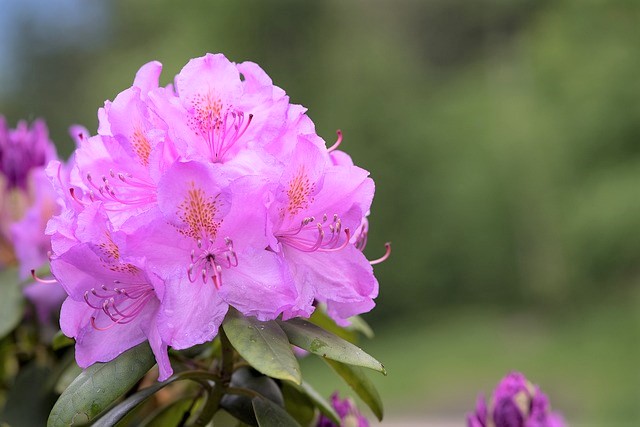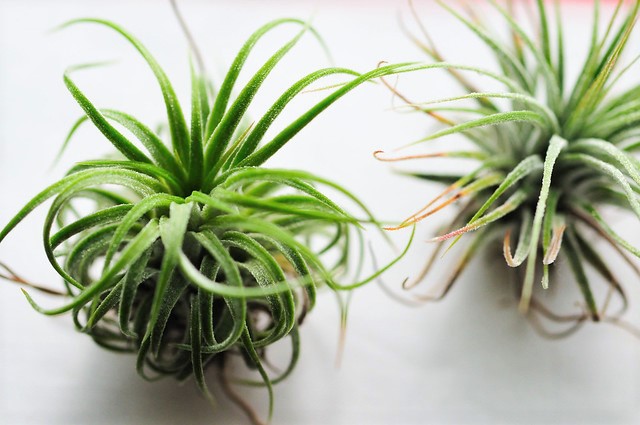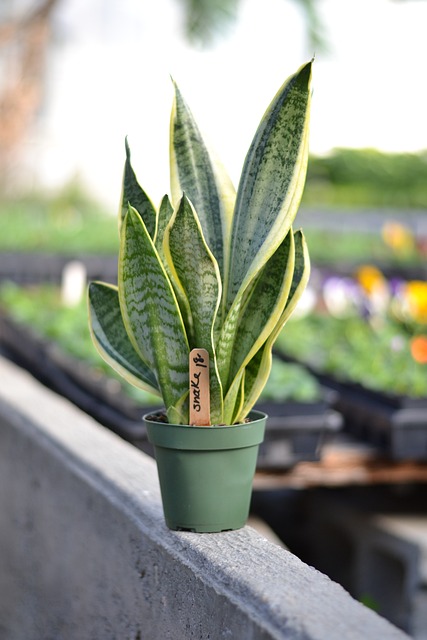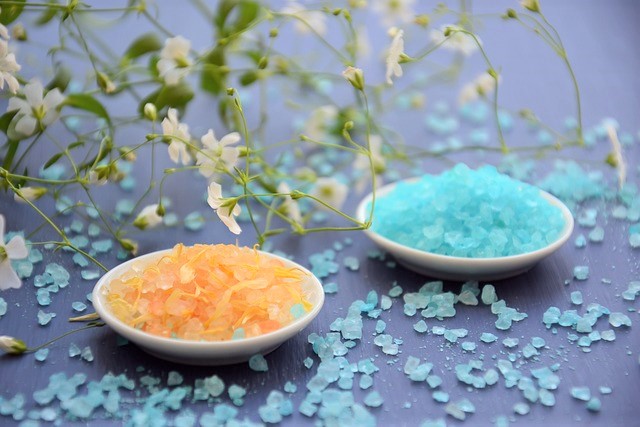Last updated on February 22nd, 2023 at 10:39 am
Epsom salts help seeds germinate, make plants produce more flowers, grow bushier, and increase chlorophyll production. They also deter pests like slugs and voles. They provide vital nutrients to supplement your regular fertilizer.
Epsom salts contain both magnesium and sulfur—chemicals key to plant growth. Magnesium improves plants’ cellular structure, ensuring they absorb other nutrients better, especially phosphorus. Sulfur helps with chlorophyll formation, makes plants more resistant to diseases, and assists in nitrogen use.
In this post, we’re going to look at plants that like Epsom salts, wood ashes, acidic soil, coffee grounds, and much more. Know what your plants like and hate so you can take better care of them.
What Plants Like Epsom Salts?
Pepper Plants
Peppers need extra magnesium because they are prone to magnesium deficiency, especially if grown in pots. Epsom salts are rich in magnesium and sulfur hence boost pepper growth.
Epsom salt used as a soil additive or foliar spray will help pepper plants grow big and produce larger, tastier yields.
Roses
Put some Epsom salt in your roses to help them benefit from the magnesium. Create an Epsom salt solution and put it in the soil for fuller blooms and lush green leaves.
Epsom salts will help your roses produce dense, lush foliage, and boost blossom size and quantity. Don’t spray the Epsom salt solution on the leaves because they may burn in the sun if they get too much salt.
Put 1/2 cup of Epsom salts in the soil and water the plant. You can also dissolve the same amount in water and then spray the solution on the soil.
Tomato Plants

Epsom salt can benefit tomatoes and help increase their flavor profile. But if you use too much, it can cause blossom end rot. Tomato plants need calcium to grow well, and too much salt can cause their roots to uptake magnesium instead of calcium.
Mix a teaspoon of Epsom salts into a liter of water (quarter gallon) and put the solution in a spray bottle. Wet the foliage on your plants every two weeks. The leaves will quickly absorb the solution. Avoid spraying your tomato plants when rain is imminent or on hot, sunny days.
How to Use Epsom Salts on Plants
To use Epsom salts in your potted plants, dissolve two tablespoons of the salts per gallon of water, and substitute this mixture with normal water once a month.
When diluted with water, Epsom salt is easily digested by plants, especially when applied as a foliar spray
Which Plants Like Wood Ashes?
Plants in Acidic Soil
Wood ash limes the soil and can be used on plants to decrease soil acidity. Plants thrive in different types of soil: acidic soil, neutral soil, and alkaline soil. Garden plants such as tomatillos and artichokes, brassicas like broccoli, and greens like arugula and collards need alkaline soil to grow well.
It’s worth noting that wood ash increases soil pH, so check the soil regularly to ensure it isn’t overly alkaline. Wood ashes shouldn’t be used on plants that love acid such as azaleas, berries, rhododendrons, parsley, and potatoes.
Plants Invaded by Disease and Pests
Wood ash can keep pests away. When added to compost or used as mulch, it can help prevent root maggots from onion plants and cabbage. Wood ash also prevents snails and slugs from invading alkaline-loving ornamental plants and flowers.
By raising the soil’s pH, wood ashes can help eliminate disease. Brassicas like cauliflower and broccoli are often affected by club root. Wood ashes help eliminate the disease by raising soil pH.
Which Plants Like Acidic Soil?

Evergreens and many deciduous trees like willow, beech, oak, mountain ash, dogwood, and magnolias prefer acidic soil. Other acid-loving plants include nasturtiums, rhododendrons, azaleas, mountain heather, blueberries, camellias, hydrangeas, and daffodils.
Acid-loving plants thrive best in different soil pH ranges. Rhododendrons, azaleas, conifers, and blueberries grow best in acid soils with a pH between 5.0 to 5.5. Most ornamental plants, vegetables, and grasses thrive in slightly acidic soils (pH 5.8 to 6.5).
Which Plants Like Eggshells?
Plants need calcium from the soil to grow healthy and strong, and eggshells contain over 90% calcium carbonate and other nutrients that your plants need. Plants that benefit from eggshell fertilizer include tomatoes, peppers, and eggplants. The extra calcium eggshells provide helps prevent blossom-end rot. Cauliflower, broccoli, Swiss chard, amaranth, and spinach also love calcium and do well with a little extra from eggshells.
If you’d like to fertilize potted houseplants, mix some eggshell powder into the soil at the top. Add the quantity based on the size of your plant. This should be done before watering to boost the absorption of the fertilizer.
Here’s how to make your own eggshell fertilizer:
- Boil half a gallon of water, and then add 5 dry eggshells to it.
- For a stronger solution, add up to 10 clean and dry eggshells.
- Leave the shells in the water overnight, and then strain the water.
- Pour the solution into the soil to add a dose of calcium and potassium to your plants.
Which Plants Like Banana Peels?
Potassium-rich banana peels are ideal for plants like peppers, tomatoes, roses, air plants, staghorn ferns, and banana trees. Banana peels are also rich in calcium, manganese, and sodium. Calcium prevents blossom end rot in tomatoes, manganese aids in photosynthesis, and sodium helps water flow between cells.

Banana peels contain nutrients vital for healthy potted plants. As they decompose, they add potassium nitrogen, phosphorus, and magnesium to the soil like a slow-release fertilizer.
You can bury banana peels in the soil or compost the soaked banana peels. Every week, water your plants using liquid fertilizer and pour it at the base. It will quickly get absorbed by the roots.
How to make banana peel liquid fertilizer:
- Chop banana peels and place them in a large bowl. Cover the bowl with water.
- Leave them for 2 to 3 days so the minerals can be extracted.
- Use the mixture as it is for your plants without diluting
- Water your plants once a week.
List of Plants That Like Coffee Grounds
Coffee grounds contain nitrogen, potassium, calcium, magnesium, iron, chromium, and phosphorus—key minerals for plant growth. They can also absorb heavy metals that can contaminate the soil. They also attract worms, which are great for your garden.
Here’s a list of plants that like coffee grounds:
- Roses
- Azaleas
- Blueberries
- Radishes
- Carrots
- Hydrangeas
- Rhododendrons
- Lilies
- Hollies
- Cabbage
You can use coffee grounds to fertilize your houseplants 7 to 10 days in a row. Don’t exceed this timespan as the soil may become over-acidic. Add a cup of ground coffee to the compost once a week.
What Indoor Plants Like Coffee Grounds?
- Spider plant
- Azalea
- Pothos
- Christmas cactus
- African Violet
- Philodendron
- Jade Plant
- Cyclamen
- Snake Plant
Do Snake Plants Like Coffee Grounds?

Yes, snake plants like coffee grounds. The plants love acidic soil, so you can use coffee grounds as a fertilizer. But don’t spread them on the soil’s surface, mix them with compost to ensure the end product is not too strong.
Which Plants Like Tea Leaves?
- Ferns
- African violets
- Begonia
- Azalea
- Select berry fruits
- Daffodils
- Camelia
- Easter lily
Tea is great for plants because it contains tannic acids and nitrogen which help fertilize and add extra nutrients to the soil. By releasing nitrogen naturally, they help balance out carbon-rich materials that may be present in the soil. Using tea leaves also adds to soil structure.
Which Plants Like Seaweed Fertilizer?
- Gardenias
- Camellias
- Azaleas
- Rhododendrons
- Vegetables
- Fruit trees
- Palms
Seaweed is packed with hormones and trace minerals that promote plant growth. It’s also rich in carbohydrates—essential building blocks in growing plants. The fertilizer is also low in cellulose and breaks down readily.
When you use seaweed fertilizer over time, it acidifies and adds iron to the soil. Iron is beneficial to acid and iron-hungry plants.
Here’s how to use seaweed fertilizer:
- Dilute one part to 10 parts water.
- Spray the mixture on your plants in a fine mist. You can also use a watering can.
- Water your plants till the liquid drips off the leaves.
Seaweed fertilizer can be applied over the foliage and around the root system. It is usually applied every 2-4 weeks. Water your plants anytime after applying the mixture.
Which Plants Like Horse Manure?
- Corn
- Potatoes
- Garlic
- Lettuce
Nitrogen-hungry plants, like the ones listed above, like horse manure. You can also use it on your grass lawn. But avoid adding horse manure to fruiting and flowering plants like tomatoes and peppers.
Horse manure can be used on plants all year round and requires no special treatment. Simply scatter it over the soil and work it in. It’s very simple! Use the manure to give your garden a boost.
